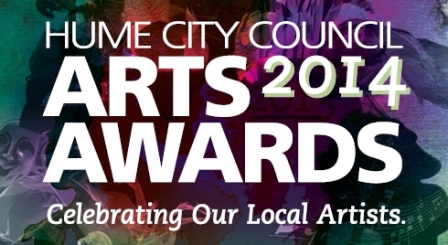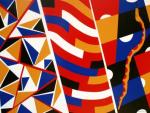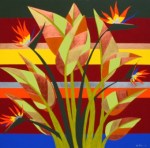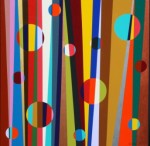POST-TRAUMATIC GROWTH: Improving one’s sense of wellbeing using art, creative writing, photography, blogging and public speaking – my journey written by ©Karen Robinson. Please click here for my latest blog news!
CRAIGIEBURN CAMERA CLUB OCTOBER PHOTOGRAPHIC COMPETITION 2020
Craigieburn Camera Club conducted its October Zoom Club Photography meeting to present October’s Photographic Competition 2020 “Monochrome” entrees. In the Intermediate Section, I received a Merit Award for my photograph titled “Car Show Off” and a Highly Commended Award for another photograph titled “Chippery Chat”. For more details, please click on here.
Above: Merit Award
“Car Show Off”
Above: Highly Commended Award
“Chippery Chat”
CRAIGIEBURN CAMERA CLUB JULY PHOTOGRAPHIC COMPETITION 2020
Craigieburn Camera Club conducted its July Zoom Club Photography meeting to present July’s Photographic Competition 2020 “All Creatures Great and Small”. In the Intermediate Section, I received a Merit Award for the below photograph. For more details, please click on here.
Above: Merit Award
“Grooming Sumatran Orangutan”
CRAIGIEBURN CAMERA CLUB APRIL PHOTOGRAPHIC OPEN COMPETITION 2020
Craigieburn Camera Club conducted its first Zoom Club Photography meeting to present the April Photographic Open Competition 2020. In the Intermediate Section, I received a Merit Award for the below photograph. For more details, please click on here.
Above: Merit Award
“Sunrise at High Camp”
64th CONVENTION AND INTER-CLUB EXHIBITION 2018
While this is not exactly an award, it was certainly a notable achievement for me at this time in my life. Much of my time over 2017 and now 2018 has been taken up in the pursuit of the perfect photograph. My hubby and I have engaged ourselves in many photography adventures within our home state of Victoria – Australia. One adventure had us attending the 64th Convention & Inter-Club Exhibition 2018 at Warrnambool where we joined other Craigieburn Club Members at the convention. Of the 15 prints submitted by the club, it was my photograph of Mickleham Farmland January 2017 that received a rating of 12 out of 15 which was the highest rating for the club – a pleasing moment for hubby and me!

HUME CITY COUNCIL ARTS AWARD FOR ‘PROFESSIONAL DEVELOPMENT’
In June 2014 I was the recipient of a Hume City Council Arts Award for ‘Professional Development Grant” in the category of Established Visual Artists (Melbourne, Australia). Hume stated that in “2014 Hume Arts Awards received a significant number of applications, signifying the breadth and quality of artistic endeavours being undertaken throughout the municipality, especially among young people. The Awards not only provide an opportunity to recognise and celebrate the talent of local artists but contribute to community strengthening by encouraging artists to articulate the value of their work and develop a future vision. The Awards likewise assist in promoting the profile of the arts in Hume and supports the building of Hume’s identity and sense of place, contributing to the important development of civic pride” (Hume City Council. June, 20).
THE AWARD ITS SELF
It was a proud moment for me and my family and friends. I am very grateful to Hume City Council for this award and hope to be part of Hume community art programs to come!
ABSTRACT PAINTINGS SUPPORT MATERIAL SUBMITTED
The abstract paintings below consists of the “Support Material” that I submitted with my application for a Professional Development Program grant.
- Painting No. 26B – Title “Green Peace and Human Nature” Sept/Oct 2008 Acrylic on Canvas – by Abstract Artist: Karen Robinson NB: All images are protected by copyright laws!
- Painting No. 26A – Title “Green Peace and Human Nature” Sept/Oct 2008 – by Abstract Artist: Karen Robinson NB: All images are protected by copyright laws!
- Painting No. 31 – Title “Don’t Tread On Me” June 2009 – by Abstract Artist: Karen Robinson All images are protected by copyright laws!
- Painting No. 32 – Title “On the Rails & Youthfulness” by Abstract Artist Karen Robinson – 2009 All images are protected by copyright laws!
- Painting No. 37 – Title “The Dining Room Table” Aug 2009 – by Abstract Artist: Karen Robinson All images are protected by copyright laws!
- Painting No. 38 – Title “A Bird of Paradise” Sept 2009 – by Abstract Artist: Karen Robinson All images are protected by copyright laws!
- Painting No. 44 – Title “My Melbourne” by Abstract Artist Karen Robinson Oct 2009/June 2010 – by Abstract Artist: Karen Robinson All images are protected by copyright laws!
- Painting No. 51 – Title “Valley of a Thousand Hills” June 2010/March 2011 – by Abstract Artist: Karen Robinson NB: All images are protected by copyright laws!
- Painting No. 52 – Title “I’m Busy” 2011 – by Abstract Artist: Karen Robinson NB: All images are protected by copyright laws!
ARTIST ARTS PRACTISE OUTLINE SUBMITTED
I also had to submit my “Artist Arts Practise Outline” and is as follows:
-
Ultimate Goal To Communicate A Story
My ‘arts practise’ talks about the processes, I undertake in completing a painting which can take many months overall. It took me some time, to find a process that worked well for me; and more time to refine it to a point where I felt I was achieving a standard, that I was happy with. My ultimate goal is to ensure, I have communicated the story I want to tell. Most of my inspiration comes from how I feel. Feelings that have been evoked by situations experienced throughout my life. Great family moments, career experiences, travelling adventures, current local and world events; and then my very inner personal thoughts, are the feelings that I use to create each painting.
-
Visual Diary
I use photography as a form of a visual diary for my paintings. I often take a series of photographs of things I am interested in – randomly or specifically. I then download them on my computer and see which I will use, as a source of inspiration for my next painting. I spend some time thinking about the painting project, before sketching up the final outline onto the canvas.
-
Pencilling Process
Penciling directly onto my canvas has become the best approach for me. I found, after experimenting with a number of different pencil types that Columbia Copperplate 700 HB gives the best result. It pencil’s on dark enough so that it does not fade or come off after much handling of the painting canvas, during work in progress. It is also light enough so that when I paint over and around it, with three coats of acrylic paint, you can’t see the original pencil sketch line. If for some reason, a sketch line is undesirable in the first stage of pencilling onto the canvas, it can be rubbed off easily with a Faber Castell 7085-20 Vinyl Eraser; leaving no residue of pencil on the canvas. For sharpening the pencil, I use a Double Hole Metal Sharpener with gives a nice pointed tip, hence ensuring the pencilling onto the canvas is fine and light but is easily visible.
At the commencement of my art journey, I used inexpensive paints. It didn’t take me long to realize that using a better quality paint along with better quality canvas, produced better quality artwork. I fell in love with the Matisse Structure Artist Acrylic Paints as they do the job well for me, and offer an impressive range of colours. Colour and shape play a major part in my paintings. They assist me in communicating the story I am trying to tell. Colours and shapes become a way of expressing emotion and/or thought. When they are all brought together within the painting, it becomes a journey of communication; between the viewer and me, the painter. I really enjoy using both these processes when painting. Mostly all the colours within the painting I have already worked out in my mind. But I do allow for progressive inspiration should the painting look like it could do with further input.
-
Canvas Used
I now used Caravaggio Canvas – Style 528 medium texture, 100% cotton (white) which is suitable for all stretcher sizes. It is universally primed, is one of the most popular cotton canvases, and offers great value for money. For the actual frame base, I choose a Canvas Stretcher that has a heavy-duty profile being:- timber – kiln dried Victorian Ash; profile – 42mm width, 32mm thickness; bevel – 9 degrees; join – European mitred mortice and tenon with slots for wedges. At the point of canvas/canvas stretcher purchase, I have the supplier fit to the back of the canvas/canvas stretcher, the necessary gallery standard hanging fittings. NB: All these materials are archival quality.
-
Paint Brush Type
It took some time, to work out what paintbrush, I liked; would do the job I wanted it to do and was affordable. I found that the Taklon brushes worked well for me. These brushes are most suitable for acrylic paints. The Artist Edge Series 2260 that is “angled/flat” shape allows me to get into tight corners, is very manageable and comes in a range of widths and lengths. Taklon paint brushes are soft, smooth to work with and absorbent. They are very easy to clean, by just washing in warm soapy water; and the brush keeps its shape and fibres for a long time.
-
Masking To Achieve Straight Lines
To assist me with creating straight lines/edges, I learned how to use Scotch-Blue Painters Tape 3M #2080. I found that there is quite a technique required to gain a successful outcome. After using a number of different types/brands and applications, I finally found this particular tape worked well. It is wide enough to protect paint colour contamination, meaning that colours don’t go out of the designated edging. It’s suitable for delicate surfaces, so it doesn’t leave a sticky residue on the canvas once removed. It has a low-medium adhesiveness which means that it does not remove the paint during the process of removing it from the canvas. But it is adhesive enough to stop paint bleeding through, underneath the tape and contamination other colour work. It can be left on the canvas for a good period of time. I usually remove the tape, after one to two days, once I have tested that the paint is completely dry.
-
Signing Art Work and Varnishing Process
After applying three coats of acrylic paint to each individual colour on the painting; and after allowing all layers to dry thoroughly, I sign and date the painting with a Staedtler permanent marker. After this process, I apply a number of very fine layers of Picture Varnish in clear gloss. This helps the colours to ‘pop’ off the canvas and also preserves the painting. Once dry, the painting has its details placed on the back canvas such as the name of the artist, the painting number, the painting name, the size, the date completed and paint type used. It is then photographed and I write the accompanying painting story. I then catalogue it into my art portfolio.
-
Home Studio
Over time I have been able to establish a home studio for myself which has been most beneficial. I find I can start and stop with ease and without a worry about my work being left until I resume again. My home is my gallery!
© Karen Robinson – Updated October 2020
POST-TRAUMATIC GROWTH: Improving one’s sense of wellbeing using art, creative writing, photography, blogging and public speaking – my journey written by ©Karen Robinson. Please click here for my latest blog news!





















Ι really like your visual diary of your paintings!!!!!!!!!!!!!!!!!!!!!!!!!!!!!!!
LikeLiked by 1 person
Thank you … much appreciate you taking the time to have a look … warm regards Karen
LikeLiked by 1 person